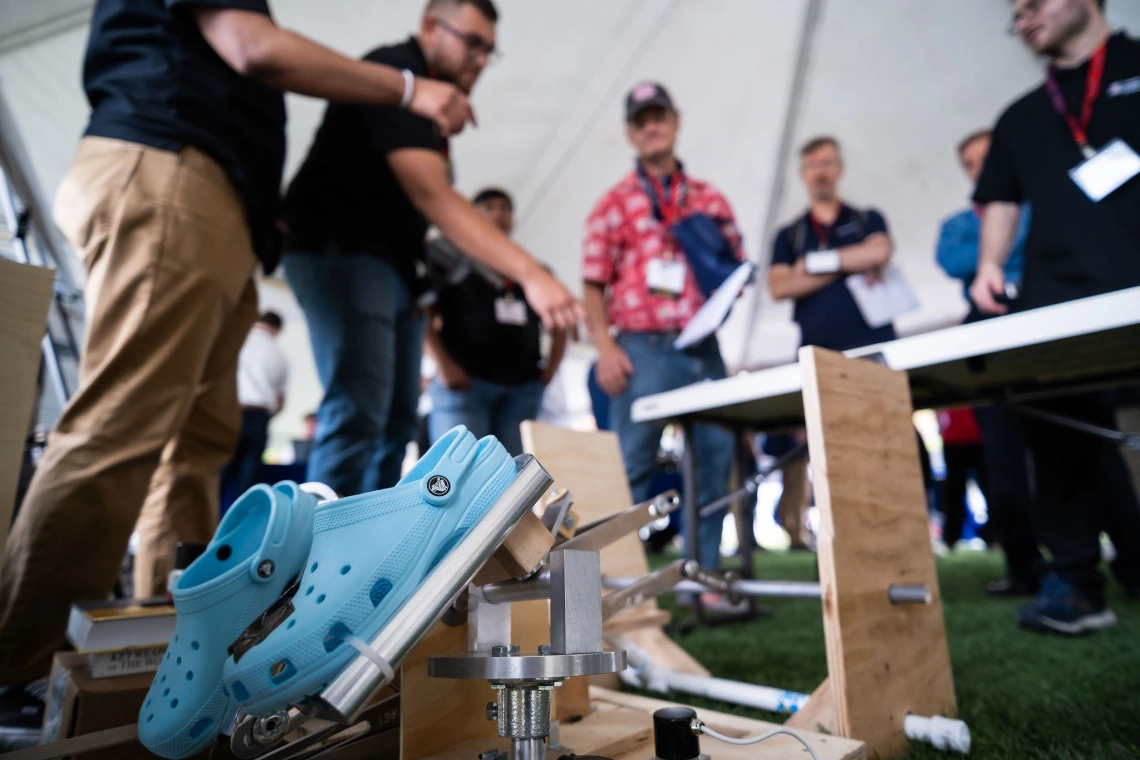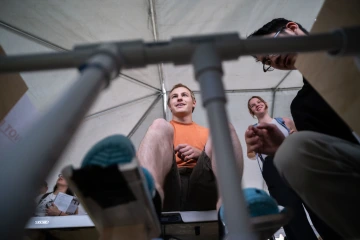Taking Control of a New Kind of Plane

Team 23060 designed a simulated airplane cockpit for UA alum Jessica Cox, the first armless, licensed pilot in history.
The College of Engineering’s 2023 Craig M. Berge Design Day featured a flight simulator with a major twist. Interdisciplinary Capstone Team 23060 designed a simulation of a Van's RV-10 aircraft specifically to be piloted by a University of Arizona alum born without arms.
Part of a project dubbed “The Impossible Plane,” Team 23060 designed a cockpit with all the instruments and necessities of a standard plane. Jessica Cox, the first armless, licensed pilot in history, operated the intuitive simulator at Design Day. Now, the students hope Cox’s Rightfooted Foundation will use their design to create the first exclusively foot-controlled airplane in aviation history.

A Design Day attendee uses the "Impossible Plane" simulator.
“It’s almost like a dream come to life to see this on exhibition at my alma mater,” Cox said. “I felt like I was one with the airplane while trying it out, and that was a first for me. I’ve been flying for over a decade in a plane that has been built for someone with hands, and now I get to feel something that’s been built uniquely and specifically for me. It was an incredible feeling.”
The group of five engineering students encountered unique mechanical challenges in their goal to assist people with disabilities. Not only did they need to make all the airplane controls ergonomic for feet, but they needed to include a set of standard controls in the cockpit for additional training and emergencies. The instrument designs also included a place for the pilots to rest their feet in order to prevent cramps during long flights.
“What I learned about was ergonomic engineering design,” said new electrical and computer engineering graduate Sheehab Zaman. “This whole thing is based on human use, so it required a lot of understanding of human needs, then coming up with multiple designs and evaluating those designs. Then we came up with a prototype and constantly readjusted it to figure out what is comfortable.”
The team replaced the control stick with two pedals and designed a system to control the aircraft's roll by rotating the pedals left or right. The pilot even operates the brakes by squeezing their thighs.
“I learned how to make a design from the ground up,” said Zachary Thach, for whom the project was part of completing a mechanical engineering degree. “I’ve worked in companies before, but that was often with things that were already made for me. It was a really nice experience to trust in myself and my teammates.”
The project is designed to allow Cox to upgrade from the two-person, 85 mph Ercoupe, to the four-person, 200 mph RV-10. However, the inclusive engineering may assist people with disabilities throughout the aviation industry.
“For our purposes, we’re mostly focused on proof of concept, but Jessica does have a team of engineers who will probably take over the project to make sure it’s FAA approved,” said aerospace and mechanical engineering major Simon Quang Minh Ly.
“These students have been incredible,” Cox said. “They’re very high caliber and dedicated, and for them to take this project on is amazing. We’ve been in every presentation to see the process and be a part of it. It’s been a wonderful journey to watch them.”
For more information, visit impossibleairplane.com.

